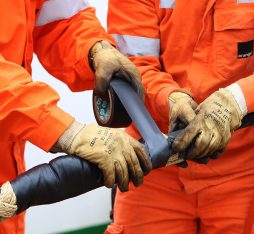DWDM
Wavelength Division Multiplexing (WDM) is a technique used by telecommunications operators to increase the data transfer rate on fibre optic.
It consists in sending several signals at different wavelengths (also called “colours”) on the same fibre. These different “colours”, which carry communications from various sources, are mixed together at the fibre entry thanks to a multiplexer and separated at the exit by a demultiplexer.
There are several types of WDM, which depend on the number of colours mixed on the fibre, when there are many (up to 80) we talk of Dense Wavelength Division Multiplexing or DWDM. DWDM thus makes it possible to carry more data without having to change fibre or lay a new one.
It’s this technology that is used for long distance networks and for submarine cables, such as the new cable that will soon link Europe to Asia via East Africa, deployed by Orange and its partners.
If we take the train analogy, it’s like going from single to double-decker carriages without changing anything on the tracks.
Being more expensive, this technology is mostly used to link the cables between cities with submarine cables, which require flow rates of thousands of gigabits per second.
It provides the flexibility necessary to optimise the network and to make it evolve rapidly according to requirements – without multiplying the number of fibres.
Read also on Hello Future


Livebox S: remote fibre installation and after-sales service thanks to embedded optical pencil technology
Discover


Djoliba, the unified network boosting connectivity in West Africa
Discover

Ghislain Guillochon: Networks infrastructures Project manager in International networks management
Discover


